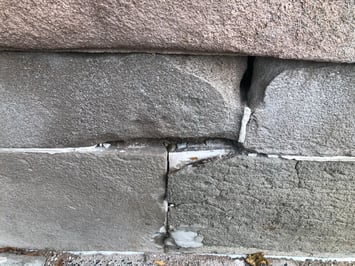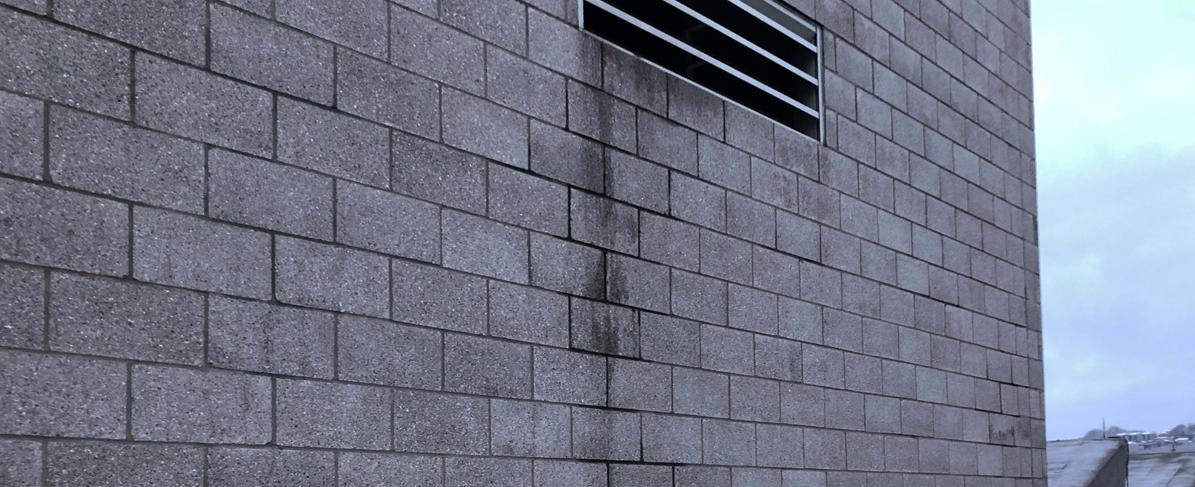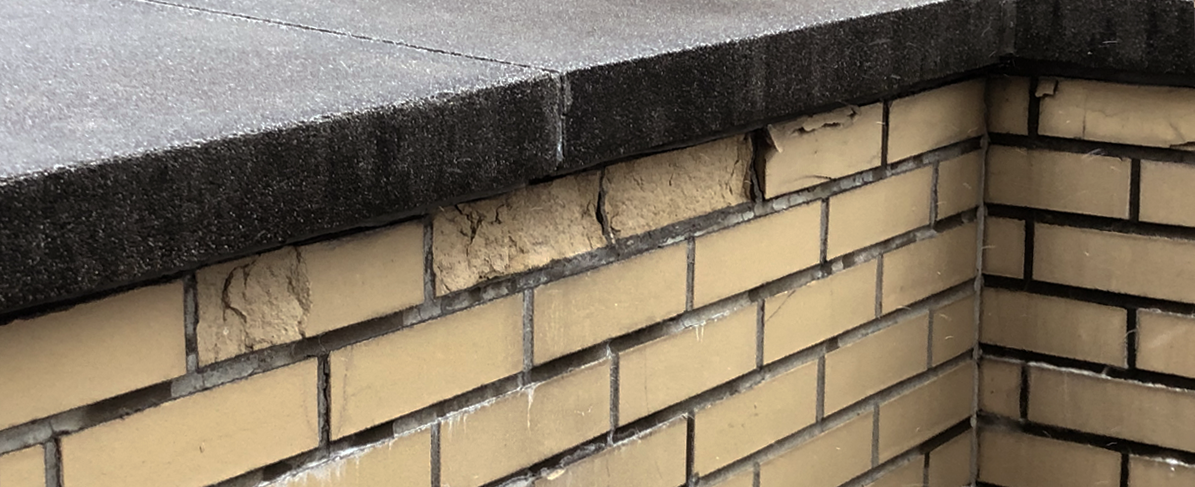In our previous blog post, we reviewed five common masonry problems and ways to prevent them. In this part 2 post, we’ll discuss the proper remediation of these issues.
The first step of remediating any masonry problem is to determine the extent of the damage. If there are concerns that the building is no longer structurally sound, promptly speak with an engineer to identify next steps. For extensive damage to a cladding that is structurally sound, the owner and facility manager may consider reskinning the entire building with a panelized wall system or insulated brick veneers. Watch the video below for an example of how this can be done with minimal occupant disruption:
Let’s review the repair methods for the following most frequent masonry issues.
1. Brick spalling
If you notice brick spalling on your building, immediately remove any loose pieces to prevent them from falling and damaging anything below. Opting to patch any brick cracks with a sealant is only a temporary fix. Proper remediation is as follows:
- Remove and replace any spalled bricks and the surrounding mortar.
- Seal the affected area with a masonry sealer (penetrative or surface sealer).
- If needed, repair any associated sealant joints.
2. Mortar deterioration
If your mortar has deteriorated, the best method of repair is called repointing. To repoint the mortar, you must:
- Cut out the mortar in the joint with a hammer drill or grinder.
- Apply new mortar and allow to dry; consider mortar chemistries with sealers built in.
- If needed, apply a sealer over the affected joints.
3. Sandstone erosion
To fix sandstone erosion, some people apply additional mortar around the areas of concern. However, if this is done without tucking it properly, the added moisture can cause further damage. To truly remediate this concern, follow these steps:
- Remove any damaged stones if possible, and replace the stones and surrounding mortar.
- Seal the surface with a hydrophobic sealer.
- If the sandstones are extremely large or the damage is extensive, work with an engineer to determine best methods for removal or repair.
.jpg?width=382&height=287&name=IMG_3682%20(algae).jpg) 4. Algae
4. Algae
If you notice algae growth on your structure, we recommend you:
- Clean the surface properly with water, appropriate cleaner and a brush or pressure-washer.
- Apply a hydrophobic sealant according to the manufacturer’s installation instructions for long-term protection from moisture and dirt.
5. Efflorescence
For areas where efflorescence has formed, we recommend that you:
- Clean the surface properly by dry brushing or rinsing and brushing with a stiff brush. If this does not produce satisfactory results, wash the surface with a proprietary masonry cleaning solution or a very dilute solution of muriatic acid (1% to 10%).
- Apply a water-based, penetrating water repellent sealer according to the manufacturer’s installation instructions for long-term protection from water and salts and to prevent other areas where efflorescence may form.
Recap:
The five masonry challenges we see most frequently in existing buildings are brick spalling, deterioration of mortar, sandstone erosion, algae growth, and efflorescence. If an owner or facility manager notices severe damage to the façade, an engineer should be brought in to review structural integrity. Otherwise, there are affordable remediation steps that can be taken to fix the masonry and prevent further damage.






